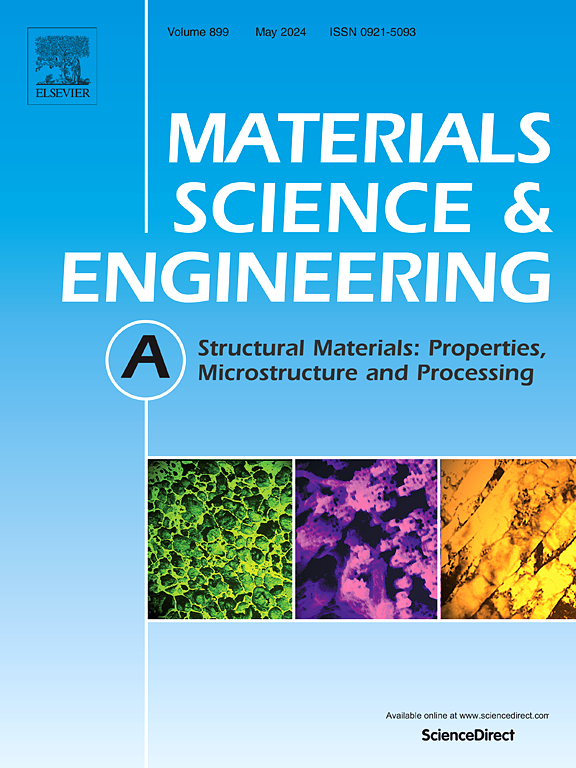Microstructure evolution and crack propagation of 316L stainless steel under cyclic shear fatigue at different strain ratios
IF 6.1
2区 材料科学
Q1 MATERIALS SCIENCE, MULTIDISCIPLINARY
引用次数: 0
Abstract
This study systematically investigates the cyclic shear fatigue behavior of 316L austenitic stainless steel under varying strain ratios. A custom-made twin-bridge fatigue shear testing machine was used to conduct cyclic experiments on the material under strain-controlled conditions (1 %–4 %) withstrain ratios (R = −1, 0, 0.5). The experimental results show that, as the strain ratio increases, the maximum positive stress of the material increases under the same strain amplitudeAnalysis of the cyclic softening coefficient indicates that cyclic softening is more pronounced at low strain amplitudes. Microstructural analysis using Electron Backscatter Diffraction (EBSD) techniques shows grain refinement and increased dislocation density in 316L austenitic steel after cyclic loading, and an increase in the strain ratio leads to a higher proportion of highly deformed grains. Additionally, during crack evolution, we observed the presence of martensitic phase transformation was observed, which caused cracks to propagate along grain boundaries. These findings not only enhance the understanding of the fatigue behavior of 316L stainless steel but also provide theoretical support for its application in high-demand fields, such as nuclear power. This research offers valuable insights for the future optimization in fatigue performance and material design of austenitic stainless steels.
不同应变比下316L不锈钢循环剪切疲劳组织演化与裂纹扩展
本文系统地研究了316L奥氏体不锈钢在不同应变比下的循环剪切疲劳行为。采用定制的双桥疲劳剪切试验机,对材料在应变控制条件下(1% ~ 4%),应变比(R =−1,0,0.5)进行循环试验。实验结果表明,在相同应变幅值下,随着应变比的增大,材料的最大正应力增大;循环软化系数分析表明,在低应变幅值时,循环软化更为明显。利用电子背散射衍射(EBSD)技术对316L奥氏体钢进行微观组织分析,发现循环加载后晶粒细化,位错密度增大,应变比增大导致高变形晶粒比例增大。此外,在裂纹演化过程中,我们观察到马氏体相变的存在,这使得裂纹沿晶界扩展。这些发现不仅增强了对316L不锈钢疲劳行为的认识,而且为其在核电等高要求领域的应用提供了理论支持。该研究为今后奥氏体不锈钢的疲劳性能优化和材料设计提供了有价值的见解。
本文章由计算机程序翻译,如有差异,请以英文原文为准。
求助全文
约1分钟内获得全文
求助全文
来源期刊

Materials Science and Engineering: A
工程技术-材料科学:综合
CiteScore
11.50
自引率
15.60%
发文量
1811
审稿时长
31 days
期刊介绍:
Materials Science and Engineering A provides an international medium for the publication of theoretical and experimental studies related to the load-bearing capacity of materials as influenced by their basic properties, processing history, microstructure and operating environment. Appropriate submissions to Materials Science and Engineering A should include scientific and/or engineering factors which affect the microstructure - strength relationships of materials and report the changes to mechanical behavior.
 求助内容:
求助内容: 应助结果提醒方式:
应助结果提醒方式:


